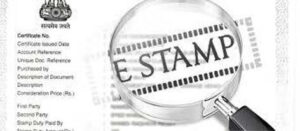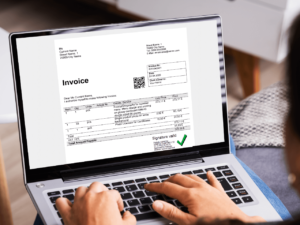Wet Signatures are simply physical signatures that one puts on paper documents with a pen / ink. Wet Signatures (also called wet-ink signatures) are therefore associated with paper documents. Paper documents require wet signatures and wet signatures can only be put on paper documents.
E-signatures are electronic signatures that are embedded on electronic documents. Hence E-signatures are associated with electronic documents. Electronic documents can only be attested with Electronic Signatures and vice versa.
Just as Wet-ink signatures impart legal validity to wet-signed documents, e-signatures impart legal validity to electronic documents, if done in a manner that complies with the laws of the relevant jurisdiction.

The most common documents that are wet-signed in traditional organizations are invoices, purchase orders, HR documents, agreements, contracts and internal approvals. This may involve multiple individual signatories within an organization. If the organization has to go paperless, it needs to replace each of these documents with their electronic counterparts and do away entirely with paper versions. This may involve going electronic on all the physical workflows and documentation processes. In the electronic world, the place of wet-signatures would be taken by electronic signatures or digital signatures.
Wet Signatures On Pdfs?
Before various countries formulated laws governing e-signatures, it was a common practice to impose an image of a wet-signature on a PDF document as a means to show is if the document had been “signed”. Obviously, this makes little sense, because anyone can take an image of any signature and paste it on any PDF document.
It is important to keep in mind the purpose of a signature in the first place – which is to authenticate the source of a document. That purpose cannot be served with an image of a wet-signature pasted on a PDF.
A wet-signature can be placed on a PDF for purely cosmetic reasons, but cannot take the place of an actual “signature”. If you are using electronic documents such as PDF files, the only way to sign them is with e-Signatures or Digital Signatures.
It is also important to know why PDFs are the desired electronic format, particularly for documents that need to be signed. It turns out that PDF has inbuilt digital signature standards that make it easy to sign the PDF files. What is more, Adobe Acrobat reader, the most common reader software for PDF files has an inbuilt mechanism to verify digital signatures on the fly, including displaying information about the issuer of the signature, its validity and so on. Any change / modification to a PDF file post insertion of the digital signature is also immediately flagged when the file is opened in Adobe Acrobat reader.
E-signatures Are The Only Way Forward

If the future is paperless (as it should be), then electronic signatures (e-signatures for short) are the only way forward. As mentioned earlier, e-signatures when inserted on a document provide incontrovertible proof that the document did indeed originate from the person whose electronic signature appears on the document. E-signature technology has also evolved significantly over the years, and many jurisdictions also explicitly define what constitutes a valid e-signature. While desktop e-signing software is available, the most common usage of e-signatures involves using online e-signature solutions, i.e., affixing e-signatures online. Online e-signature solutions are particularly convenient when multiple parties have to sign a document (“multi-party signing”) because all signatories can access the same software online, instead of each having to perform the installation on their computer. Truecopy Credentials Provides both on-line as well as on-premise solutions for e-signatures and digital signing.
E-signature On-line Web Applications And On-premise E-signature Solutions
A web-application refers to an application running on a web server which can be accessed via a browser over the internet. Truecopy Credentials provides the industry-leading solution “TS1” which is a browser accessible web-application for signing documents. Truecopy application can also be accessed over mobile devices. The solution is not only highly secure, but is extremely feature-rich, thereby supporting every possible use-case that a potential client may have. It is particularly suited for enterprise deployments.
In some cases there is a need for an on-premise e-signature or digital signing solution. Sometimes, clients are unwilling to have their documents go outside their organization. In other scenarios there are applications where the documents are internal, and the signing is purely for internal purposes. In these situations, Truecopy Credentials offers an on-premise signing solution, that provides rapid signing capability and is fully deployed on the Customer premises.
Enterprise E-sign Solutions
The enterprise use-cases are different from individual signer use-cases. For one, most enterprise use-cases involve workflows that include multiple individuals, each of whom is supposed to approve / sign the document in a particular sequence. There may be alternate signatories for each signer, to account for leaves / absences. Different document types may have different signatories, and signatory sequences. The solution itself may have to work seamlessly within the security framework of the organization, and integrate with existing ERP systems. The signatures may be with each individual or in an HSM. In addition, there may be specific audit, and data maintenance requirements. A desirable e-signature solution such as the one offered by Truecopy Credentials addresses all of these common requirements of clients out-of-the box. Although customization of the solution is possible, the design of the solution ensures that customization is rarely needed. Enterprise E-signature solutions offered by Truecopy make wet-signatures completely obsolete and are a huge step towards going paperless.





